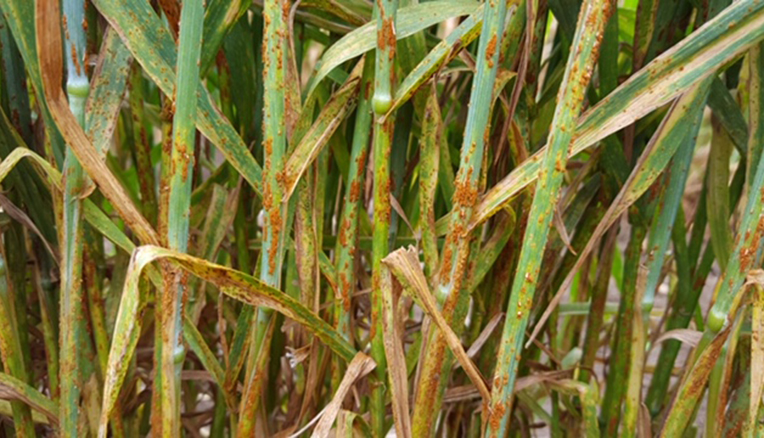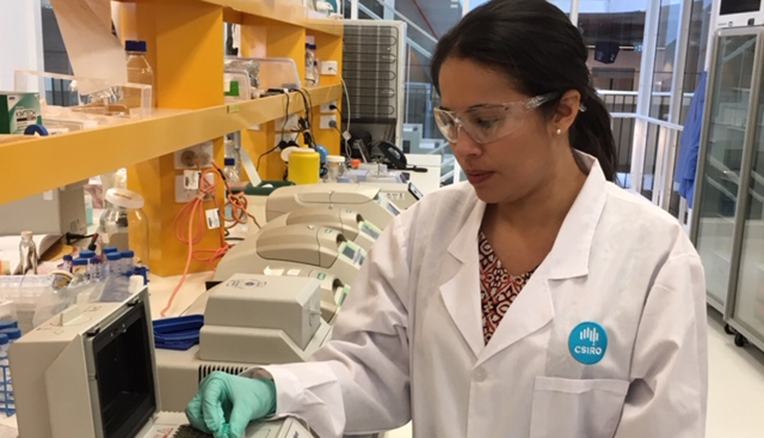Prof Zakkie Pretorius, Research Fellow, and
Prof Botma Visser, Associate Professor, both from the
Department of Plant Sciences at the University of the Free State (UFS), partnered in a ground-breaking research project headed by
Dr Melania Figueroa from the
Commonwealth Scientific and Industrial Research Organisation (CSIRO), Australia. Together, these scientists solved a 20-year-old mystery, uncovering the origins of one of the world’s deadliest strains of cereal rust disease.
The manuscript, with the title,
Emergence of the Ug99 lineage of the wheat stem rust pathogen through somatic hybridisation, was accepted for publication in
Nature Communications.According to a statement released by CSIRO, research shows that the devastating Ug99 strain of the wheat stem-rust fungus was not the result of a sexual cross between different rust strains as previously thought, but in fact was created when fungal strands simply fused to create a new hybrid strain.
This process is called somatic hybridisation and enables fungi to merge their cells and exchange genetic material without going through a complex sexual reproduction cycle. The study found that half of Ug99’s genetic material came from a strain that occurred in Southern Africa around 100 years ago and eventually spread to Australia.
The discovery implies that other crop-destroying rust strains could hybridise elsewhere with Ug99, for example, to exchange genetic material and create a whole new enemy.
While there was some speculation that rust strains could hybridise – based on laboratory studies in the 1960s as well as some earlier studies on the topic – this comprehensive research now provided the first genomic evidence that the process can generate new strains.
History of Ug99Prof Pretorius was the first person to describe the dangerous Ug99 isolate, confirming the ability of the isolate to leave the Sr31 resistance gene ineffective (up to that time, effective against all known wheat stem-rust races). This laid the basis for international concern.
He named the field sample Ug99, based on the country of origin (Uganda) and year of sample collection (1999).
“The Sr31 resistance gene and associated traits were so effective that the gene occurred in almost 70% of
CIMMYT’s (Mexican-based International Maize and Wheat Improvement Center) spring wheat germplasm. In addition, many popular cultivars containing the gene were released around the world.”
“Ug99 then disappeared for a few years. When the race re-appeared in East Africa, it caused localised but severe epidemics,” he said.
Prof Pretorius continues: “Leading wheat breeders and pathologists were concerned that Ug99 could destroy wheat production in many global regions where wheat is critical for food security. Thus, in 2005, Dr Norman Borlaug, Nobel laureate and father of the green revolution, called for a meeting in Kenya where a global effort to combat the threat was initiated. The international wheat research community was mobilised and with funding primarily from the
Bill and Melinda Gates Foundation and coordinated by
Cornell University in the USA, research commenced.”

Wheat stem rust 14: Rust diseases are the cause of extensive crop losses each year. With this recent discovery, published in
Nature Communications, scientists can now better identify the resistance genes which can be bred into wheat varieties to give crops
long-lasting protection against rust. (Photo: Supplied)
“From field trials in Kenya, it soon became apparent that 90% of the world’s wheat varieties were susceptible to Ug99. Although breeding and selection for resistance started in earnest, the pathogen adapted, gaining virulence for other previously effective resistance genes. At present, 13 races have been described within the Ug99 group occurring in 13 countries, mostly in Africa, but also in Yemen and Iran. Five of these races are present in South Africa, all confirmed by scientists from the UFS and
ARC-Small Grain in Bethlehem. The original Ug99 has, however, never been detected in South Africa.”
Combined effortsRusts are common fungal diseases of plants. The spores of the fungus attach themselves to the stems and leaves of wheat plants and essentially suck the nutrients from the plant. Plants either die or produce shrivelled and low-quality grain.
Group Leader at CSIRO, Dr Melania Figueroa, agrees that Ug99 is considered the most threatening of all rusts, as it has managed to overcome most stem rust-resistance genes used in wheat varieties.
“There is some good news, however; the better you know your enemy, the more equipped you are to fight against it. Knowing how these pathogens come about means we can better predict how they are likely to change in the future and better determine which resistance genes can be bred into wheat varieties to give long-lasting protection.”
Earlier this year, CSIRO worked with the University of Minnesota and the 2Blades Foundation to improve wheat resistance by stacking five resistance genes into the one wheat plant to combat wheat stem rust.
The breakthrough came as Dr Figueroa’s group was sequencing Ug99 (then at the
University of Minnesota), and at the same time a CSIRO team led by Dr Peter Dodds was sequencing Pgt21 in Australia (Pgt21 is a rust strain that was first seen in South Africa in the 1920s and believed to have been carried to Australia in the 1950s by wind currents). When the two groups compared results, they found that the two pathogens share an almost identical nucleus and therefore half of their DNA.
“This discovery will make it possible to develop better methods to screen for varieties with strong resistance to disease,” said Dr Figueroa.
Molecular fingerprintingIn addition to infection studies, molecular fingerprinting by members of the South African Ug99 race group led by Prof Botma Visser at the UFS, confirmed their genetic placement in context with Ug99 and other global stem rust races. The availability of the original Ug99 collection, along with other local rust isolates in long-term storage at the UFS, was essential to the success of the current research.
Despite the continued evolution of stem-rust variants, excellent progress has been made worldwide in the breeding of resistant wheat cultivars, including in South Africa. With funding from the Winter Cereal Trust,
Dr Willem Boshoff, Senior Lecturer in the Department of Plant Sciences at the UFS, is responsible for the annual testing of all commercial wheat cultivars and advanced breeding lines for appropriate stem rust races.
 Dr Melania Figueroa from the Commonwealth Scientific and Industrial Research Organisation (CSIRO). Photo: Kate Langford
Dr Melania Figueroa from the Commonwealth Scientific and Industrial Research Organisation (CSIRO). Photo: Kate Langford